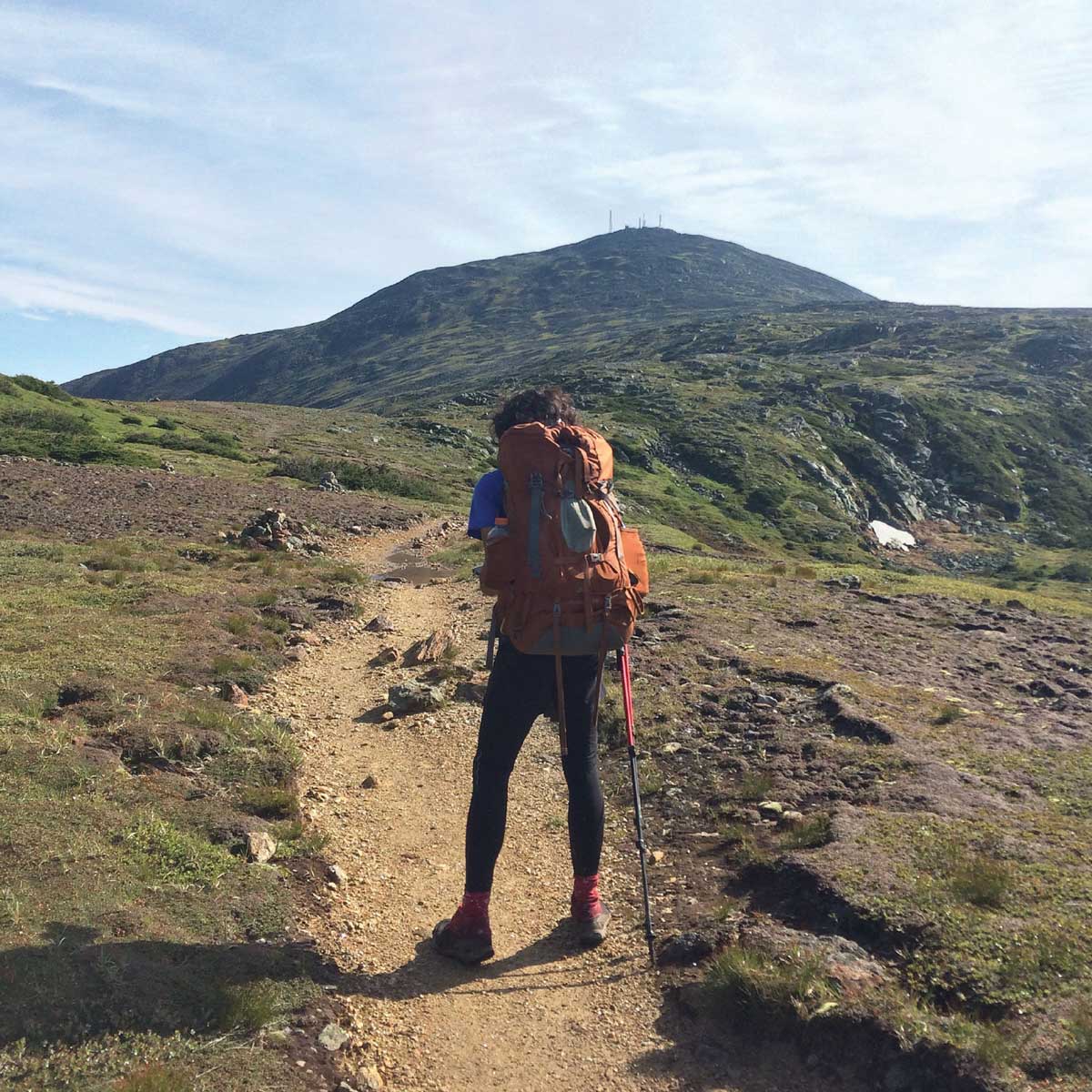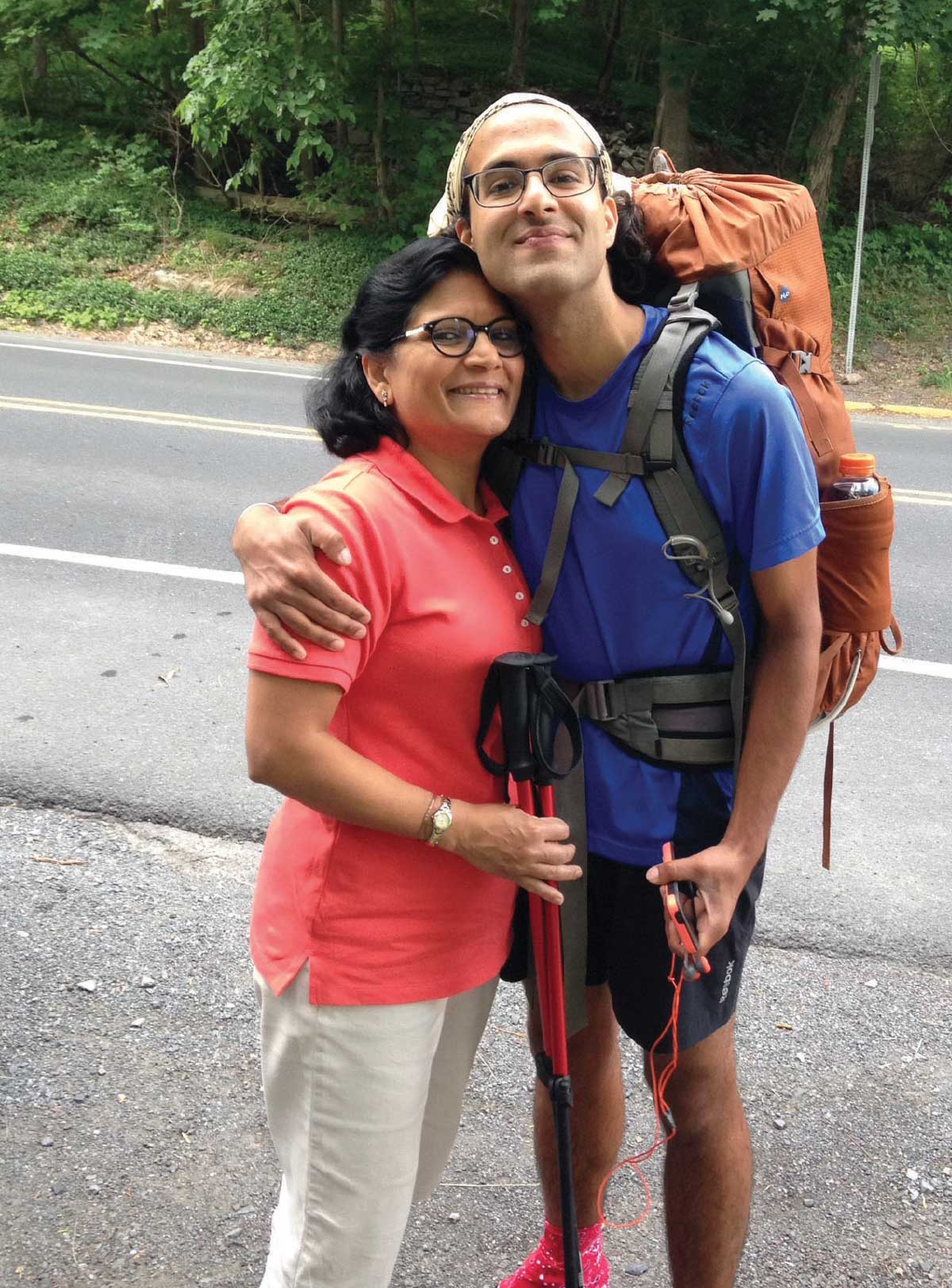
At first, I was confused. Clearly, I was a hiker. But, when he asked again — this time, slower and with a greater emphasis on the word “are” — it was clear he meant my ethnicity. This was not the first time I heard this question. I could pass for a range of ethnicities with my black hair, permanent five o’clock shadow, and skin that ranges from olive-toned in winter to dusky brown in summer.
“I’m Indian American” I stated plainly. “Good,” he said curtly. He seemed relieved by my response and subsequently grabbed my driver’s license out of my hand and processed my room reservation without a word. The other hikers in the reception area shifted uncomfortably. Feeling interrogated and unwelcome, I asked him to cancel the reservation before he ran my credit card and I walked out of the motel, trudging to the nearest hostel. No one spoke to me or looked at me as I walked out.
What became clear to me, at that moment, was that my identity would significantly shape my journey in ways good and bad. To answer the clerk’s question more fully: I am Indian American, born in Massachusetts, and the son of immigrants from the state of Gujarat in western India. I am in my thirties, having thru-hiked the A.T. in my late twenties. But I grew up on trails, hiking in the Berkshires, White Mountains, and Maine since childhood. I am queer and live with my boyfriend who is a recent immigrant from India. I am part of a family that can claim to have lived the American dream, immigrating to the United States during the height of the technology boom and slowly moving up the economic ranks to an upper middle-class status. I am educated, having been schooled at top-notch institutions, and I am also professionally successful, having worked in senior management for both for-profit and non-profit organizations.
All these markers shape my Trail experience. My race and sexuality have been markers that have resulted in negative experiences along the A.T. — from one hiker suggesting my Trail name be “Osama bin Hikin” or an A.T. Community resident asking me if I was comfortable living in such obvious sin, being attracted to my own sex. My education and economic status, meanwhile, have given me access, opportunity, and comfort beyond most. The experience I had thru-hiking not only the A.T., but also the Pacific Crest Trail and the Continental Divide Trail, were marked by these personal facts and made my experiences hiking each of these trails distinctly my own.
That is both the pleasure and the problem of talking about the Trail experience. While we talk about the “A.T. experience” in monolithic ways, it is a catch-all term for the near infinite personal experiences each of us have while recreating on the Trail. These experiences are conditioned by who we are and how our identities are perceived. To ensure that each of us has a safe, welcoming, and inclusive Trail experience, we all must acknowledge that this near-infinite range of Trail experiences exist. That my Trail experience is not yours. And yours is not mine. That both are real and different.
We must also acknowledge that just because one person had a positive experience on the A.T. — free of discrimination, harassment, and discomfort — that the same may not be true for someone else with a different set of identities. The A.T. is not a separate reality from the rest of the world and is prone to racism, sexism, homophobia, classism, ageism, and other forces that can make it a less welcoming, less safe, and less inclusive space. It is also a product of history and is structured by the same forces that the rest of society has been shaped by.



It was then that the ATC realized its need to commit to something larger and deeper: not just broader relevancy but justice. As managers of a public resource, our work is and should be informed by a commitment to environmental and social justice. If the resource we manage is not as safe, as welcoming, and as inclusive as it could be, then we have substantial work to do. Recognizing this, the ATC’s “A Commitment to Justice” letter was shared with our constituents and, in a matter of hours, sparks flew.
“Rocks and trees don’t see color.” “Stick to the Trail.” “Last time I checked, social justice and Trail maintenance are not the same thing!” “Black people can hike the A.T., just like me. If they don’t come, it’s not our fault.”
These are just a few of the comments we received — among hundreds — the morning after the letter was posted. Among the comments decrying the letter, the most common themes were a denial that racism or discrimination exist on the Trail or in Trailside communities, that justice, equity, diversity, and inclusion were not part of the ATC’s mission or vision, and that Black people were always welcome to the Trail but chose not to come. We knew we had a problem.
Acknowledgement is the beginning. In the ATC’s “A Commitment to Justice” letter, we acknowledged the issues at hand: “The A.T. is not racially or ethnically diverse. It is not accessible to people from low-income communities. It is not always a safe place for women. And, it is not relevant to many people we consider to be part of the next generation. We recognize this must change.”
However, knowing how we got to this place requires us to engage in an understanding of our entire history, including the history that preceded the A.T. We must understand that public lands are stolen lands — lands acquired by the forced removal or genocide of the land’s Indigenous communities. We must understand that the A.T., while a recreational opportunity to some, traverses the routes which slaves once used to escape the antebellum South. We must recognize that some Trail management practices, whether intentionally or unintentionally, led us to a demographic that is largely male, largely Caucasian, largely above 55 years old, and largely affluent.
By gaining an understanding of our entire history and acknowledging (and naming) the full range of problems we are confronted with, we can educate — and ultimately act — in a way that creates more robust and resilient solutions to today’s problems.
We will invest in change, with our time and our money. But we also recognize that this issue of A.T. Journeys is part of a larger conversation about who we are and how we got here — and how we will change. It is important to recognize up front that we will make mistakes. That this must be a broad-based effort, with those who have remained silent in the past speaking up and engaging in the process. And, that we must approach each other with empathy, civility, and understanding. That some of the things we want to discuss will likely lead to discomfort but this is not an attempt to fuel guilt, but rather to acknowledge that there is a problem and, more importantly, there is a path forward.
This will not be easy, but it will result in a better and broader Trail community.We hope you will join us in this journey.